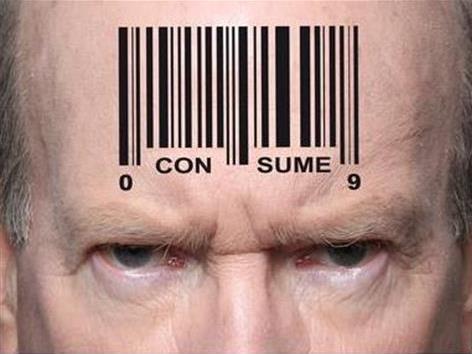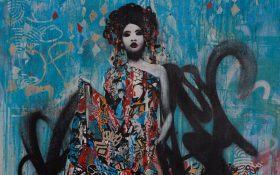Image: tnooz.com
Galleries and museums today are branded as destinations. It is an idea that has been globally championed for close to two decades, and one that has seen attendances driven upwards. Simply, it is a success story.
On the coattails of that brand creation has been merchandising.
Part of rethinking museums has been about making them more accessible by expanding the viewing experience. They are no longer just hallowed white cubes for looking at art, but are destinations for fine dining, places for a hip coffee and somewhere to find that unique “arty” gift.
Exiting through the gift shop – to adopt the title of street artist Banksy’s film from 2010 – has become de rigueur.
Attendance up and dollars in the coffers could hardly be terms for complaint, but many have raised the question of late whether our gallery shops have become too skewed towards crafty coffee cups and coasters?
Has the delicate ecosystem between resource and retail been thrown out as shelf space has a dollar demand.
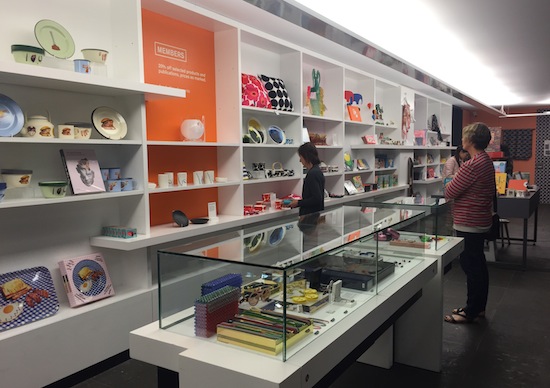
NGV is typical of most gallery shops today that have moved the books of the shelves to make way for arty products; Photo ArtsHub
Merchandise is a branding opportunity
What once started out as a specialist bookshop with a few collection postcards and the odd poster, has become big business for galleries – take the global brand of The Met (Metropolitan Museum of Art in New York), which even has outlet stores in Australia – no museum attached.
It would seem that the buzzword of the day is “brand” – everyone wants to know how to create visibility with a crisp and memorable delivery.
Will a beer cooler with your gallery logo or a tote bag do it? The short answer is no.
We have learnt that people are less responsive to logos today. Audiences have become more sophisticated in the way they browse and filter, and images have become king. It is like contemporary life is being curated by Instagram and we are all being told to get in step.
The confusion lies, however, in that there is also a yes in that no of logo blur.
Richard Harling was Manager of Retail and Publishing at the Art Gallery of NSW (AGNSW) for over ten years and in 2013 started his own business The Cultural Commerce Consultant, working with major cultural institutions.
As Harling puts it, the plastic dinosaur or fridge magnet is not only a tangible reminder of a positive experience, but that it advocates you as a museum-goer to others.
‘Build on that. When you think about your products don’t focus on things, rather think of a range. You want to tell a story; and that story will be shared,’ he said.
Read: Arty merchandising sells
A good example is the silk scarf by Australian fashion designer Linda Jackson commissioned by the National Gallery of Victoria (NGV) to capture the gallery’s signature stained glass ceiling by Leonard French.
It is beautiful, it is buyable, and it carries a story unique to that place.
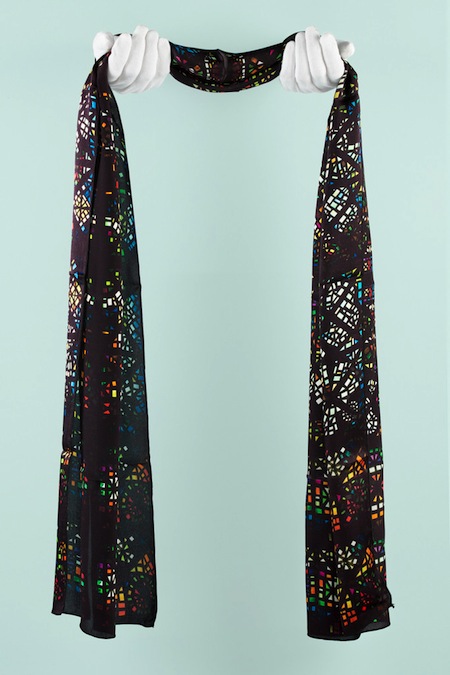
Great Hall ceiling silk scarf by Linda Jackson sold at NGV store for $195.
Similarly, visiting the new National Gallery of Singapore (NGS) recently, I could not miss purchasing an umbrella that sports their institutions iconic dome. They are more successful walking advertising than a logo-emblazoned coffee mug.
What the Jackson-French scarf and the NGS umbrella have done is create unique merchandise that captures an experience specific to that cultural institution. “Experience” is the key word here. In contrast, what does a foam logoed “stubbie” cooler say?
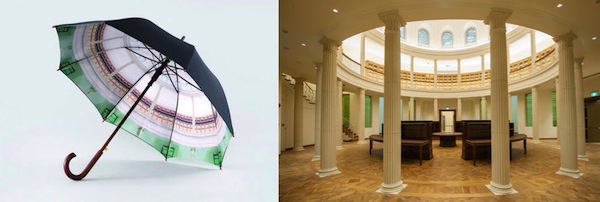
Merchandise works best with it connects with an experience unique to the organisation; courtesy National Gallery of Singapore
Shelf space equals dollars
While I am extremely fond of the gallery shop and celebrate the role that it has played in democratizing our public collecting institutions, I share a growing view that the pendulum has swung too far.
Case in point was exiting NGV International’s blockbuster Andy Warhol / Ai Weiwei, mushrooming with tailored merchandise, and not-so-tailored crafty buy-ins, making the most of the visitor drawcard.
And if you missed the exit shop, well there was another … and another point of sale – a device being used by several of our institutions these days.
The problem is that it is easy.
Shopping comes naturally to us – we know how to be a customer. So put it in front of your audience when they are relaxed and the likelihood is they will buy something. Cha-ching!
There is a giant flaw, however, when it comes to the bigger picture. As our gallery shops become just like any other hipster arty shop around town, the need to head to the gallery becomes less.
And while merchandising may draw and snare new audiences, the objective one would hope remains to grow that audience and turn them into regulars. Part of that trajectory is education and understanding, and the provision of current and appropriate resource material is key to that path.
Fewer art magazines are being stocked in our gallery shops as mainstream tastes are being catered for with gusto.
Read: Are our art magazines in a state of crisis?
To be fair, most gallery shops (especially our state galleries) have a healthy stock of art books, both thematic and monographs on artists. These however are rarely placed within the dialogue mix on the display tables – nurturing that leap.
Getting the mix right
Harling says: ‘Get it right and you tick an audience box and a dollar box.’ He continued: ‘There is a saying in retail, “don’t sell the product, sell the experience”’.
So while a stubbie cooler may be a fun conversation starter around the “barbie”, it is not really going to convert someone into action to visit a gallery, or visit the next show after that blockbuster moves on.
Retailing today is key in strengthening the viability of public art galleries. This would point then to the greater failure we are facing.
Merchandising is not the problem. Misguided marketing, partnered with a lack of understanding of an organisation’s long term vision, has seen poorly conceived products entering the gallery shop, and in some cases I would proffer, are costing galleries money.
Keep it connected. Ensure it tells your story. And don’t sell out shelf space – and the rest of the arts ecosystem – for the quick buck.
